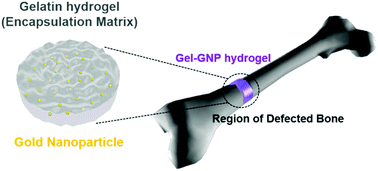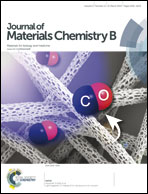Enhanced bone regeneration with a gold nanoparticle–hydrogel complex
Abstract
Gold nanoparticles (GNPs) are widely used in diagnostics, drug delivery, biomedical imaging, and photo-thermal therapy due to their surface plasmon resonance, fluorescence, and easy-surface functionalization. According to recent studies, GNPs display a positive effect on the osteogenic differentiation of mesenchymal stem cells (MSCs) and MC3T3-E1 osteoblast-like cells. The aim of this study was to develop a new approach for bone tissue regeneration based on the utilization of a biodegradable hydrogel loaded with GNPs. We have used photo-curable gelatin hydrogels (Gel) in order to provide a proof of principle of GNPs in regeneration strategies for bone tissue repair. We have investigated the effects of these Gel–GNP composite hydrogels both in vitro and in vivo. The in vitro results showed that the hydrogels loaded with GNPs promote proliferation, differentiation, and alkaline phosphate (ALP) activities of human adipose-derived stem cells (ADSCs) as they differentiate towards osteoblast cells in a dose-dependent manner. Moreover, the in vivo results showed that these hydrogels loaded with high concentrations of GNPs had a significant influence on new bone formation. Through these in vitro and vivo tests, we found that the Gel–GNP can be a useful material for bone tissue engineering.


 Please wait while we load your content...
Please wait while we load your content...